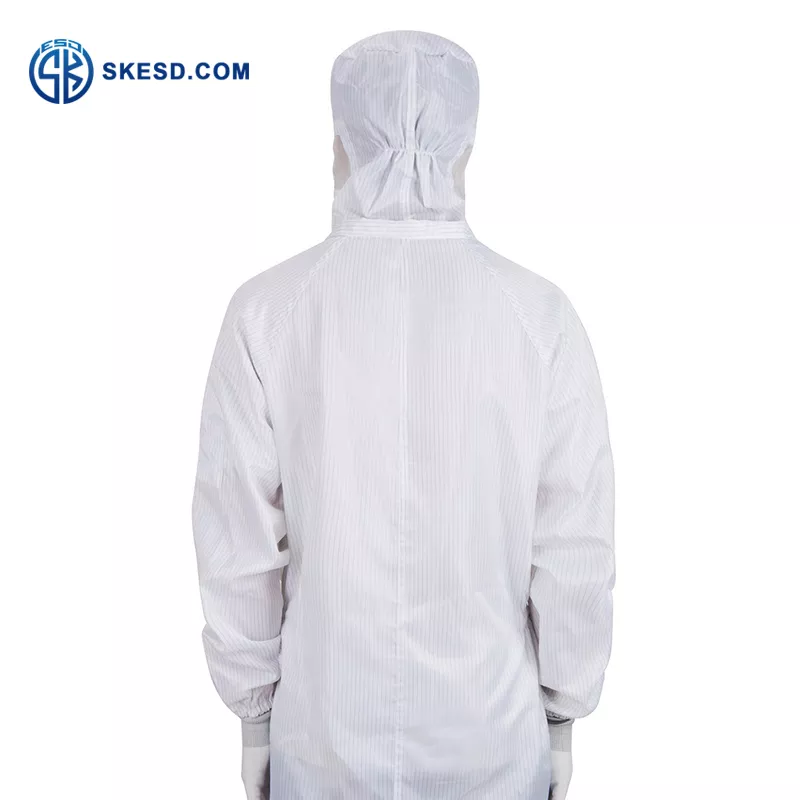In esd garments where sensitive electronic components are handled, maintaining a host free of electrostatic discharge (ESD) is crucial to avoid damage. ESD garments play an important role in ensuring the security and integrity of the environments. This informative article aims to provide an extensive guide to understanding, selecting, and using ESD garments effectively.
What exactly are ESD Garments?
ESD garments are specially designed clothing items which make it possible to control the electrostatic discharge by dissipating static electricity. These garments are made of materials that have conductive fibers woven into them, which stop the build-up of static electricity on the surface regarding the fabric plus the person wearing it.
What makes ESD Garments Important?

Protection of Sensitive Components
Electronic components such as integrated circuits and semiconductors are highly at risk of damage from static electricity. Even a minor discharge can cause significant damage, affecting functionality and causing failures. ESD garments assist to protect these sensitive components by preventing static build-up and subsequent discharge.
Compliance with Industry Standards
Many industries, including electronics manufacturing, aerospace, and pharmaceuticals, have strict standards concerning the control of electrostatic discharge. Using ESD garments helps organizations adhere to these standards, ensuring the security and quality of the products.
Enhanced Workplace Safety
Beyond protecting sensitive components, ESD garments also contribute to overall workplace safety. In environments where flammable materials can be found, controlling static electricity is vital to prevent sparks which could ignite fires or explosions.
Types of ESD Garments
ESD Lab Coats and Jackets
Lab coats and jackets are normal ESD garments used in cleanrooms and laboratories. They offer full upper body coverage and so are typically created from lightweight, breathable materials that incorporate conductive fibers.
ESD Coveralls
Coveralls offer full-body protection and therefore are perfect for environments where comprehensive coverage is required. They ensure that no area of the body is exposed to potential static build-up.
ESD Gloves
ESD gloves protect sensitive components during handling. They truly are made from materials that prevent static build-up on the hands, ensuring that any objects touched remain secure and safe from electrostatic discharge.
ESD Footwear
Footwear such as for example shoes and boots created for ESD protection assist to dissipate static electricity through grounding. They have been essential in environments where workers have to move about frequently.
ESD Wrist Straps
Wrist straps are worn across the wrist and linked to a grounding point. They supply a consistent path for static electricity to be safely dissipated, preventing build-up in the person wearing them.
Materials Used in ESD Garments
The potency of ESD garments hinges on the materials utilized in their construction. Common materials include:
Conductive Fibers
Conductive fibers are woven into the fabric of ESD garments to produce a path for static electricity to dissipate. These fibers are often made of materials such as carbon or stainless steel.
Synthetic Blends
Many ESD garments are made of synthetic blends that combine conductive fibers with materials like polyester or nylon. These blends offer durability, breathability, and comfort while keeping ESD protection.
Cotton Blends
Some ESD garments use cotton blends with conductive fibers. These blends provide a balance of comfort and protection, making them ideal for environments where extended hours of wear are needed.
Selecting the Right ESD Garments
Assessing Workplace Needs
Step one in choosing the proper ESD garments is always to assess the specific needs of one's workplace. Think about the forms of tasks performed, the sensitivity associated with the components handled, and also the degree of coverage required.
Reviewing Industry Standards
Ensure that any ESD garments you select conform to relevant industry standards. Standards such as ANSI/ESD S20.20 provide guidelines for controlling electrostatic discharge in a variety of environments.
Evaluating Material Properties
Look at the properties associated with the materials found in ESD garments, including their breathability, durability, and comfort. Choose garments that offer a balance of protection and wearability for your workers.
Considering Fit and Comfort
Proper fit is really important for the effectiveness of ESD garments. Make sure garments fit well without having to be too tight or too loose, allowing for ease of movement while keeping protection.
Proper Use and Maintenance of ESD Garments
Wearing ESD Garments Correctly
Ensure that workers understand how to wear ESD garments correctly. This includes fastening closures, tucking in shirts, and making certain no other clothing items interfere using the effectiveness of this garment.

Regular Inspection and Testing
Regularly inspect and test ESD garments to make sure they maintain their protective properties. Seek out signs and symptoms of wear and tear, such as fraying or damage to conductive fibers, and replace garments as required.
Cleaning and Care
Follow manufacturer guidelines for cleaning and caring for ESD garments. Some garments might need special laundering procedures to steadfastly keep up their effectiveness, while some could be suitable for regular washing.
Conclusion
ESD garments are a vital component in protecting sensitive electronic components and maintaining workplace safety. By knowing the importance of these garments, selecting the right types to meet your needs, and ensuring proper use and maintenance, you are able to create a safer work environment and improve the quality of the products. Investing in high-quality ESD garments is a good investment as time goes on success of your organization.
